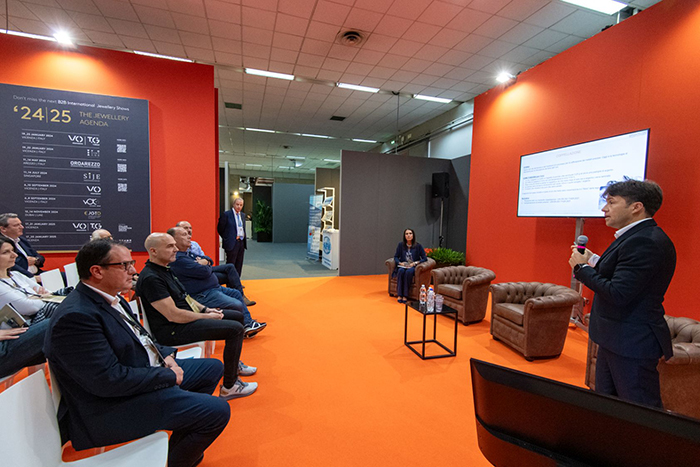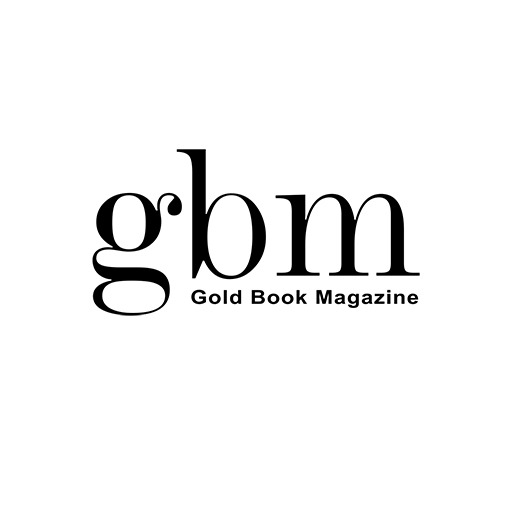
OROAREZZO 2024, GENERATIONAL CHANGE FOR GOLDSMITHS AND JEWELLERS
The goldsmiths of the future meet the companies that are planning generational turnover today. On the last day of Oroarezzo 2024, at Arezzo Fiere e Congressi Italian Exhibition Group launches Career Day: about one hundred students from Arezzo exploring the trade show aisles to meet the companies looking for new skills and talent. «There are work opportunities in the Italian goldsmith district», Roberto Santi , Headmaster of Arezzo’s Professional Technical Institute, told the young girls and boys in the auditorium. «The 300 or so annual retirements are not replaced by the same number of school graduates. The institutes in Arezzo guarantee a supply of only 46 graduates per year». The technological impetus of Industry 4.0 and the NRRP funds that the ITS TAB Foundation has at its disposal guarantee training in the right skills. For those who, on the other hand, wish to continue their studies, the Master in Jewellery History, Design and Marketing provides added value, Paolo Torriti, director of the Master, recalled.
Physical shop sales versus online trade, the distinction has been overcome. «Multi-channel is not the only way to sell» said Pierluigi Ascani from Format Research market research institute during Oroarezzo. «Nowadays, the most structured jewellery stores manage to equip themselves with a level of organisation able to cope with new consumer demands. This is certified by the figures that were presented in a preview by Federpreziosi Confcommercio at Oroarezzo. If the number of employees in Italy in 2013 was 100, in 10 years , 14 base points have been lost but the number of jewellery stores has decreased by 24 basis points. The number of employees is higher than the number of stores. Therefore, fewer yet more structured jewellery stores with more employees, and that is good news» Ascani said. In a market worth 6.3 billion for jewellery stores alone, the distribution over the national territory sees the South and Islands with 40.5% of the stores and 30.4% of employees; the North-West regions have a more balanced situation with 22.6% of jewellery stores and 23.9% of employees; the North-East has 15.6% of jewellery stores and 25.8% of employees; while Central Italy boasts 21.3% of jewellery stores and almost 20% of employees . Of the 6.5 billion, 938 million come from e-commerce. This is just the value of e-commerce produced by jewellery stores, confirming a recognisable appeal to customers also for online sales. An appeal that is sustained by investments in communication: technology, training and professionalism are needed to build a flow of communication that is hybrid and integrated across the various online channels (whose existence, according to consumers and the market, is now taken for granted) and this leads all the way to the physical shop. The talks were attended by Stefano Andreis, national president of Federpreziosi Confcommercio, Elena Spanò, president of Federpreziosi Confcommercio Florence Arezzo, and Simone Haddad , vice-president of Federpreziosi Confcommercio Rome.
From techniques already used in the Bronze Age to the laser tools of today, the aim of the goldsmith’s trade is to create objects of value and ensure economic growth. The main question is: which processes allow jewellery or fashion accessory surfaces to have the best possible finish without an excessive and costly use of precious metal? Scientific research comes to the rescue and in this field too, Italy has much to offer the global gold and jewellery industry. On the second day of Oroarezzo, Italian Exhibition Group’s international exhibition specifically for gold and jewellery manufacturing, closing today at Arezzo Fiere e Congressi, the Italian Association of Metal Finishings – AIFM discussed about “surface treatment for jewellery, gold and fashion accessories between tradition and innovation”.
Speaking were Massimo Innocenti from Florence University, Roberto Bernasconi from Milan Polytechnic, and two authoritative voices from industry; Germany’s Helmut Fischer with Mario Savona for thickness measuring instruments, and Varese-based Lafonte with Giacomo Ramon, for galvanic bath filtration systems to reduce the environmental impact of surface treatment. «Regulations change, technologies change», Elena Travaini , secretary general of A.I.F.M., summarised, «but there is still little knowledge of the economic advantage that applied research can bring to the jewellery industry. Take rhodium-plating, for example, with which white gold is obtained. It wears away over time and must be reapplied. Ensuring the durability and resistance of the finish to atmospheric agents or even just to the pH of the jewellery wearer’s skin makes all the difference, even on the goldsmith’s profit and loss account».




